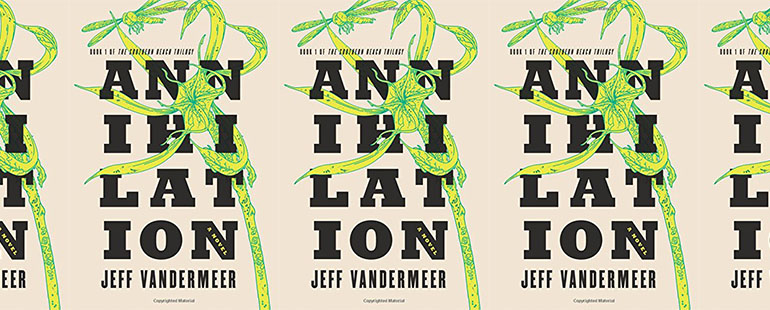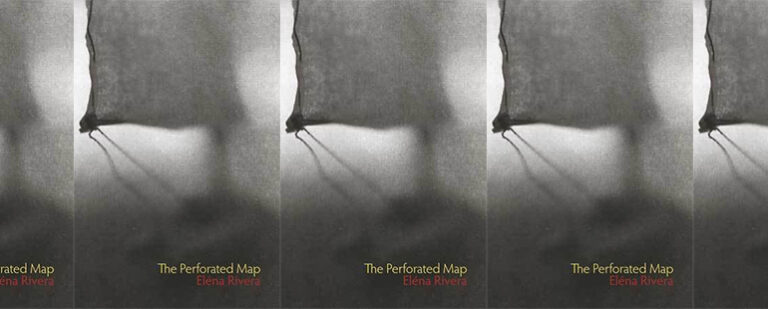Reading Annihilation

My mother bought me a Kindle as an early birthday present this year and, after finding that I could easily download eBooks from my local library, I made it a point to make time for the things I had been meaning to read. One such book was the popular novel Annihilation, by Jeff VanderMeer. Annihilation follows a four-woman team of unnamed characters (referred to only by their professional titles) as they explore a region known as Area X, where they are sent to observe strange phenomena and learn what they can. We follow the events of the novel through the mind of one of the four characters, the biologist, a woman who both struggles with what she discovers in Area X and, at the same time, is deeply fascinated by the transitional nature of the inexplicably—often terrifyingly—altered flora and fauna within. Amidst a seemingly alien landscape, the biologist encounters things that seem unsettlingly human—an uncanny eye of a dolphin, the residue of mask-like skin sloughed off in the reeds, plant and fungal growths that look eerily like human shapes frozen in mid-motion. At one moment, the biologist studies samples she took throughout one exploratory trek and finds in the cells a commingling of human and animal or plant DNA. She herself spends a significant portion of the book wondering about the ways Area X has altered her both physically and mentally.
I read Annihilation in nearly one sitting, staying up far later than I usually do because I simply couldn’t get enough of the story. Part of the fascination was a morbid one: I am frightened by the softest of horror stories but find the arch of them intriguing. Body horror in particular has always been a difficult genre for me to face—the image of an unwanted, unstoppable metamorphosis of the human body into something else, whether animal, plant, or inanimate object, is utterly terrifying to me. For one thing, it always seems painful. There are few instances where an unwanted transformation is seamless or pain-free. In most cases, the transformed tries to halt or reverse the change, their panic increasing as they slowly realize that they can’t stop whatever is happening. By the story’s conclusion, they have fallen into utter desperation, grasping at whatever chance they have of returning to how they once were. Annihilation, in its focus on “unnatural” or unexpected transformations, hit on these deeply-rooted fears.
After I eventually put the book down, in the early hours of the morning, I struggled to fall asleep—my brain, already trending towards anxiety as a baseline, slipped into an unexpected existential crisis. The novel’s imagery haunted me, and in my delirious half-awake state I found myself envisioning death, imagining what it would be like to die in Area X, what transformation my human body would go through as it was swallowed by forces both natural and, potentially, unnatural. The thrice-repeated scream that gives the book its title echoed in my mind: annihilation, annihilation, annihilation.
But the truth is that we will die. Even if I live a long and healthy life, my body will eventually break down and decay, beginning a metamorphosis that I will have no control over. Eventually, I will be placed in a crematory and the bits of me that remain will be scattered in a natural landscape somewhere. There will be a time when my existence, even in memory, will wholly fade away. My own fears of death, though, are minuscule in the face of what Annihilation points out: the sheer unstoppable magnitude of natural forces and the fact that humanity’s actions, while doing considerable damage to our world now, also highlight our own hubristic folly. In an article for The Atlantic, Peter Brennan explores what he dubs the “arrogance of the Anthropocene,” or the inflated importance of humanity within the vast scope of deep, geological time. Brennan writes, “Very little of our handiwork will survive the obliteration of the ages. If 100 million years can easily wear the Himalayas flat, what chance will San Francisco or New York have?” This is a sentiment similar to what is found in Annihilation and the books that make up the rest of VanderMeer’s Southern Reach trilogy. It becomes clear throughout them that no matter how many teams go into Area X, humanity is never really any closer to understanding the transformative forces at work in the region. The biologist comes to this realization on her own and embraces it, allowing her curiosity to lead her forward in the face of a situation that would leave someone less brave—like me—in utter despair.
That is what is so fascinating about the ideas in Annihilation. It repeatedly presents examples of transformation that are hauntingly alien and, often, leaves readers with a sense of unease. But at the same time, there is within the book an underlying sense of acceptance of these unstoppable forces. From the beginning, the biologist approaches Area X with the personal interest of someone who has always been fascinated by transitional spaces: patches of green in the middle of large cities, lands reclaimed by nature, the tide pools that blur the lines between land and sea. For her, Area X is not necessarily a terrifying space that needs to be wrangled and subdued. Instead, it is a space that should be accepted as it is, whatever it turns out to be.
When I first opened the book, I assumed that the title came from the destructive force of Area X. I believed, in my own fear of death and unwanted metamorphosis, that annihilation described what happened to those who entered into the area. Instead, the title comes from a series of hypnotic commands screamed at the biologist at one point in the novel, intended to induce self-annihilation in the event that the exploratory mission goes awry. But, because of her exposure to Area X, the biologist is no longer influenced by the man-made command. For the biologist, the transformations she experiences in Area X are ones that perpetuate life, rather than death—for the time being, at least.
The commingling of animal, plant, and human in Area X creates a sense of uncertainty in the characters, not only in how they should keep themselves safe on their mission, but in how to respond to the things they do see. The biologist finds herself unsettled by what she encounters because, often, she sees something very human in the landscape and the odd creatures that occupy Area X. Whether this is because the landscape and creatures have literally drawn in human beings or are simply mimicking what it encounters is unclear. How do we respond to things that occupy a gray space, when the landscape and animals suddenly feel very, literally, human? For many cultures this question is a nonissue—respect and acceptance of non-human beings is already actively practiced. But for many in urbanized areas who live far removed from direct or meaningful communion with natural spaces, thinking of the natural landscape as something worthy of respect is becoming more of a concern as the climate crisis hurtles us towards literal annihilation.
In a beautiful piece for The New Yorker, Lacy M. Johnson describes the funeral held for a glacier in Iceland, named Okjökull, who has shrunk so significantly due to the climate crisis that it no longer can be called a glacier. Instead, it has become “dead ice.” Perhaps we need this type of human-centric language in this moment, this type of mirroring of human experience, to describe the lands we occupy and to learn to think of existence as a commingling of human and non-human elements. Once we are able to mourn the world as we do those we love, perhaps we can learn to accept our place not as masters over nature, but as travelers who get to live on Earth for a geologically brief time. Annihilation does not balk at the sheer futility of humanity in the face of natural forces, but it doesn’t wholly destroy all who enter it, either. Instead, it returns readers to the sublime aspect of nature—the understanding that it can be both terrifying and breathtakingly beautiful.


